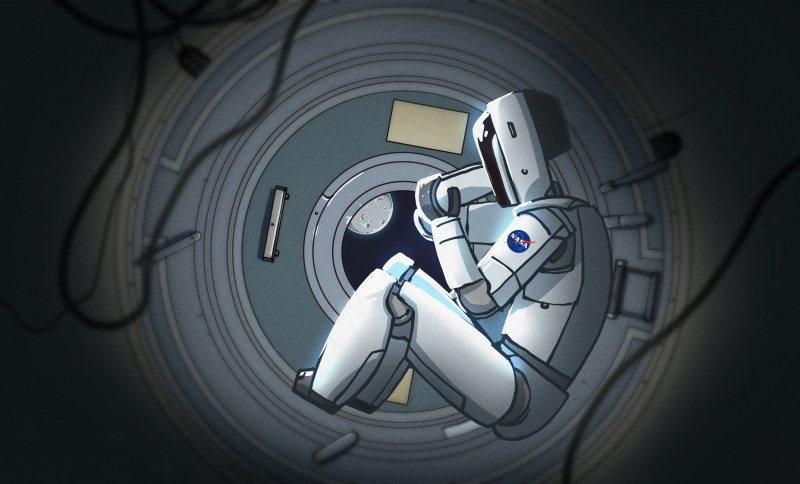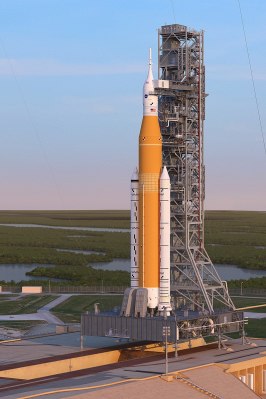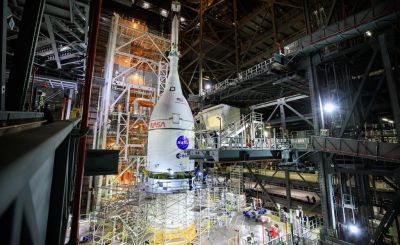
NASA first landed a human on the moon back in 1969, and last achieved the feat in December 1972. In the intervening years, there have been few other missions to Earth’s primary natural satellite. A smattering of uncrewed craft have crashed into the surface, while a mere handful of missions have achieved a soft landing, with none successful from 1976 to 2013.
However, NASA aims to resume missions to the lunar surface, albeit in an uncrewed capacity at this stage. And you won’t have to wait very long, either. The world’s premier space agency aims to once again fly to the Moon beginning in February 2022.
The first mission will be known as Artemis-1. It serves as a flight test for the broader Artemis program, which is NASA’s effort to return humans to the Moon. It will mark the first flight of NASA’s long-awaited Space Launch System, as well as the first flight of a non-development Orion multi-purpose crew vehicle (MPCV) capsule. Launching from Kennedy Space Center, the mission duration will be a full 25 and a half days, with the Orion craft spending six of those in Lunar orbit.
NASA reported that the spacecraft was stacked up successfully on October 20. The vehicle was assembled in the aptly named Vehicle Assembly Building, and is the first super heavy-lift spacecraft to be built there since Apollo 17 in 1972.
Thus, Artemis-1 will be the beginning of a new era for NASA as it attempts to replicate its glorious past achievements. Let’s take a look at the hardware they’ll use to do so.
Space Launch System

The Space Launch System is NASA’s new super-heavy lift rocket. It aims to serve roughly the same purpose as the Saturn V known so well for its role in the Apollo program.
The rocket’s first stage, also known as the core stage, runs four RS-25 rocket engines burning cryogenic hydrogen and oxygen, previously seen serving as the Space Shuttle Main Engine. Early examples of the Space Launch System will use refurbished Space Shuttle engines, before NASA transitions over to the simplified RS-25E design for future builds. The engines will be treated as expendable in Space Launch System flights.
Two solid-fuel booster rockets also assist the first stage, reusing casings from the boosters used on the old Space Shuttle. The boosters have had a redesign with new avionics and some other modifications, and will eliminate the parachute recovery system previously used. Instead, the boosters will be allowed to crash to Earth, similarly being treated as expendable.
The upper stage of the rocket is termed the Interim Cryogenic Propulsion Stage (ICPS). It’s based on the Delta IV launch system, but has been stretched and upgraded to human-rated specification for use in future crewed flights. The ICPS runs a single RL10 engine running on cryogenic hydrogen and oxygen, and is responsible for orbital injection as well as trans-lunar injection duty.
Standing 111 meters high, and 8.4 meters in diameter, the Space Launch System is almost identical in height to the Saturn V but around 1.5 meters slimmer. The later Block 2 models are intended to carry approximately 130,000 kg to lower-earth orbit, comparable to the the Saturn V’s capabilities to loft 140,000 kg to the same region.
Despite the similarities, the Space Launch System does outperform its predecessor in some areas. The Block 1 vehicle that flies next year will develop 39.1 MegaNewtons of thrust, a full 15% greater than that of the Saturn V. It’s still less than the 45.4 megaNewtons promised by the Soviet N1 of the 1960s, however the N1 never flew successfully.
The Space Launch System has faced significant controversy during its development period. Literally being built out of old Space Shuttle parts doesn’t say much for its high-tech credentials. Indeed, the launcher’s performance specs are hardly surprising given that its main stage rocket engines rely on designs first drawn up in the 1970s.
However, NASA needs a big rocket if it’s ever going to return to the Moon, let alone chase its longer-term goals of establishing a permanent presence there and a visit to Mars. A successful unmanned flight will do a lot to re-establish the agency’s profile as a force in the space industry.
Orion

The Orion capsule is a spacecraft that will serve as the crewed module in NASA’s Artemis program. It’s designed primarily to sit atop the Space Launch System, complete with a tower launch escape system to separate the vehicle in the event of an emergency.
Only the Orion Crew Module returns to Earth. Designed as a truncated cone with a blunt spherical end, the basic design is similar to the Apollo CSM that took astronauts to the moon back in 1969. However, Orion is slightly larger in diameter, with reportedly 50% more volume, and room for four to six astronauts inside. The Crew Module is designed to support long-duration crewed missions of up to 21 days duration. Total weight of the crew module is approximately 8500 kg. Recovery of the Orion Crew Module is via splashdown, with parachutes used to slow the rate of descent as in prior designs.
The Orion spacecraft has many modern amenities however, which differentiate it from the earlier Apollo designs. It features a full glass cockpit derived from systems used on the Boeing 787, as well as autodocking capability to handle rendezvous with other spacecraft.
Orion sports an AJ-10 hypergolic rocket engine as its primary propulsion. Six custom engines from Airbus are used for the reaction control system, along with eight R-4D-11 engines as well.
It bears noting that Orion will not be used for lunar landing, however. Instead, current plans involve the Orion spacecraft docking with a specially-designed SpaceX Starship, known as the Human Landing System, in lunar orbit. Astronauts would then transfer to the Starship for lunar landing, and would return to the Orion craft for the journey back to Earth.
Mission Goals

The mission will serve as a full test of the combination of the Space Launch System and the Orion module. The aim is that the successful Artemis-1 mission will be followed by a crewed launch for Artemis-2, which will follow in late 2023. Artemis-3 is then intended to land on the moon sometime in 2024, though given delays thus far, it’s expected that this timeline may be pushed out further.
Main payloads for the mission include the Matroshka AstroRad Radiation Experiment, which aims to measure radiation doses that could be absorbed by tissue in the regions of space beyond lower-earth orbit. It will also test the AstroRad radiation vest developed by StemRad, which aims to protect bone marrow and vital human organs from radiation in space. This will be achieved with two female mannequins designed for medical imaging tests, one wearing the vest, and the other unprotected. It’s hoped this data will help inform spacecraft design for further deep-space missions, such as an eventual landing on Mars.
The Artemis-1 mission will also carry many secondary payloads. Ten CubeSats will travel on the mission, including BioSentinel, which will take a living microorganism beyond lower-earth orbit to study the effects of space radiation. Others include the Lunar IceCube, which will search for water ice on the Moon, as well as LunIR, which will do surface studies of the Moon using spectroscopy and thermography.
Overall, Artemis-1 is a mission that will be a huge milestone for NASA in terms of getting back to the capability it had in the 1960s. Given the fraught political and economic environment on Earth, it’s been a difficult road for the agency, and a manned mission to the Moon, let alone Mars, still seems like a far-off possibility. Artemis-1 could be the stepping stone that gets humanity to believe, once again.
No comments:
Post a Comment